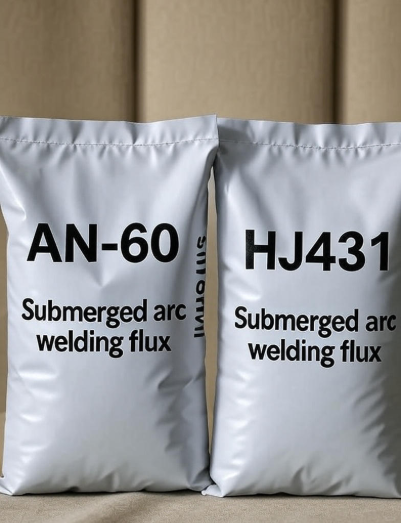Can submerged arc welding fluxes An-60 and HJ431 replace each other?
2025-11-05
Submerged arc welding fluxes AN-60 (Russian standard) and HJ431 (Chinese standard) are highly similar in chemical composition, basicity, and application, so they can replace each other in many cases, especially for single-layer or limited-layer welding of low-carbon steel and low-alloy steel (such as ships, bridges, pressure vessels). Both are fused acidic fluxes (with a basicity of approximately 0.7-0.8), featuring high manganese, high silicon, and low fluorine. They provide good arc stability and weld appearance, but have high silicon and manganese pickup, which may affect the toughness of multi-layer welding.However, the following points should be noted for the swap:

1.Compatibility: AN-60 is often used for carbon steel welding matched with welding wires such as EL12 and EM12K, and HJ431 is similar. If the base material and welding wire are the same, they can be directly replaced; otherwise, parameters may need to be adjusted to match the mechanical properties (such as tensile strength of 415-550MPa, yield strength ≥330MPa).
2.Limitations: Acidic fluxes are suitable for rapid welding and rusty surfaces, but they are not suitable for multi-layer welding of thick plates (as they tend to increase oxygen content and reduce low-temperature toughness). If the project requires high toughness, it is recommended to use neutral or alkaline fluxes instead.
3.Practical suggestions: Before replacement, conduct small-batch tests to verify the weld quality and X-ray inspection (which needs to reach Level I). The drying process is the same: drying at 300-350℃ for 2 hours.





